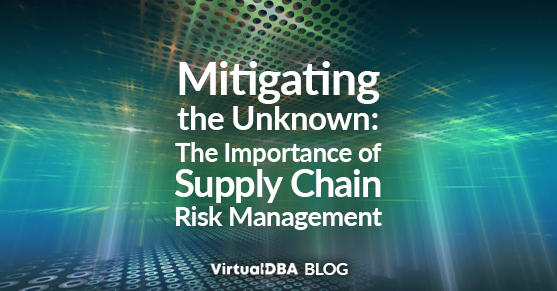Organizations rely heavily on third-party vendors and suppliers to deliver goods and services in today’s interconnected global economy. While these partnerships drive efficiency and innovation, they also introduce significant risks. Supply chain risk management is crucial for ensuring business continuity, protecting brand reputation, and safeguarding sensitive data.
What is Supply Chain Risk Management?
Supply chain risk management is the systematic process of identifying, assessing, and mitigating potential threats to an organization’s supply chain. It involves a comprehensive evaluation of the entire supply chain ecosystem, from raw materials to end customers, to identify vulnerabilities and implement measures to reduce their impact.
Why is Supply Chain Risk Management Important?
- Business Continuity: Disruptions in the supply chain can lead to production delays, stockouts, and financial losses.
- Brand Reputation: Supply chain failures, such as product recalls or data breaches, can damage an organization’s reputation.
- Regulatory Compliance: Many industries have stringent regulations regarding supply chain practices, and non-compliance can result in penalties.
- Financial Loss: Supply chain disruptions can increase costs, such as expedited shipping or sourcing alternative suppliers.
- Cybersecurity: Third-party vendors may have access to sensitive data, increasing the risk of cyberattacks.
The Role of Supply Chain Vendors
Supply chain vendors play a critical role in helping their clients manage risk. Vendors can build trust and strengthen customer relationships by implementing robust risk management practices. Here’s what supply chain vendors can do:
- Risk Assessment: Conduct regular assessments to identify potential vulnerabilities within their operations.
- Transparency: Provide clear visibility into their supply chain, including information about subcontractors and suppliers.
- Security Measures: Implement strong security measures to protect customer data and intellectual property.
- Incident Response: Develop and test incident response plans to address potential disruptions.
- Certifications and Compliance: Obtain relevant certifications (e.g., ISO 27001, SOC 2) to demonstrate commitment to security and compliance.
- Communication: Maintain open and transparent communication with clients about potential risks and mitigation strategies.
- Continuous Improvement: Foster a culture of constant improvement in supply chain risk management.
Key Supply Chain Risks
To effectively manage supply chain risk, organizations must understand the most common threats:
- Operational Risks: Disruptions from natural disasters, labor strikes, or transportation issues.
- Cybersecurity Risks: Data breaches, ransomware attacks, and cyber espionage.
- Supplier Financial Risk: Supplier bankruptcy or financial instability.
- Quality Risks: Product defects or quality issues impacting customer satisfaction.
- Regulatory Risks: Changes in regulations that impact supply chain operations.
- Reputational Risks: Negative publicity due to supply chain failures or unethical practices.
Building a Resilient Supply Chain
Building a resilient supply chain requires a multifaceted approach. Organizations should consider the following strategies:
- Diversification: Reduce reliance on a single supplier or region.
- Risk Transfer: Utilize insurance and contracts to transfer some risks.
- Supply Chain Visibility: Implement systems to track and monitor supply chain activities.
- Collaboration: Foster strong relationships with suppliers and partners.
- Emergency Preparedness: Develop contingency plans for various disruptions.
- Continuous Monitoring: Regularly assess and update risk assessments.
By prioritizing supply chain risk management, organizations can build more resilient and sustainable supply chains, protecting their bottom line and preserving their reputation.
Contact us for more info!

